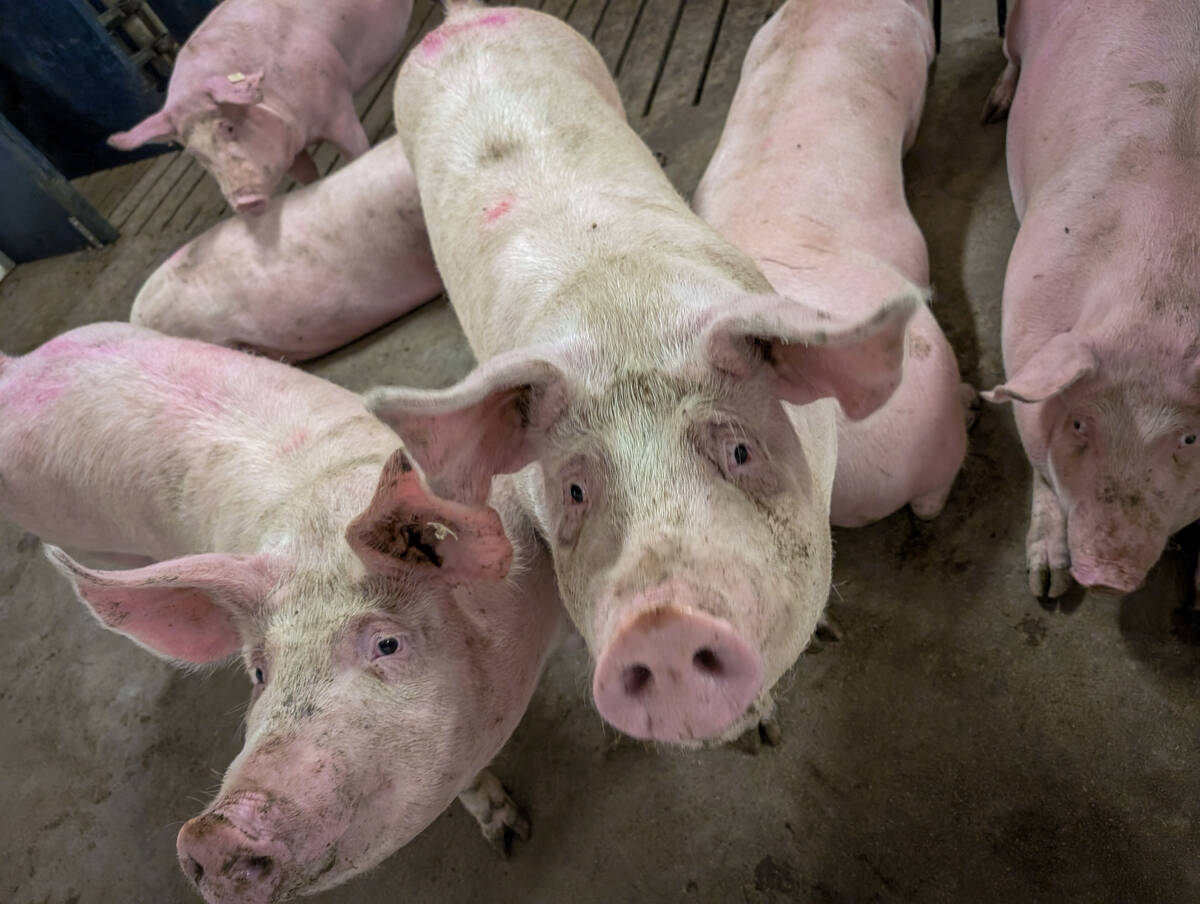Many producers are naturally alarmed when a cow aborts a fetus. They don’t know if it is the first of many or an isolated incident.
Abortions do occur normally at a relatively low rate. As many as three to five percent of cows can abort normally in a particular population. Many of them happen when the embryo is young and may appear only as a cow that is recycling or a cow that is open at pregnancy checking time.
Abortions have many potential causes, and determining the cause of an abortion storm is a major diagnostic challenge for veterinarians and veterinary diagnostic pathologists.
Read Also

Pork sector targets sustainability
Manitoba Pork has a new guiding document, entitled Building a Sustainable Future, outlining its sustainability goals for the years to come.
We can divide the potential causes into two main categories: non-infectious and infectious.
Non-infectious causes may include genetically caused abortions because of lethal gene combinations.
As well, there are several nutritional causes, most of which are associated with toxins.
Ergot toxicity has been diagnosed more frequently in Western Canada and is a potential cause of abortion, even when no obvious clinical signs of ergot toxicity are occurring in the cow.
Other toxins, such as mycotoxins and nitrates, have been incriminated in abortion outbreaks.
Fungal abortions can occur when cows eat mouldy feed during pregnancy.
Cows occasionally abort from trauma or rough handling, but this is probably rare because the calf is well protected by the amniotic fluid that surrounds it within the placenta.
Infectious causes include familiar viruses such as infectious bovine rhinotracheitis and bovine viral diarrhea virus. They are easily controlled with appropriate vaccination programs, and every breeding female should be vaccinated.
Bacterial causes include leptospirosis, brucellosis, ureaplasma, campylobacter and listeriosis. There is an effective vaccine for campylobacter, which should be considered for breeding females, especially if cows are exposed to bulls from outside herds, such as in community pastures.
Brucellosis has been eliminated from the Canadian cattle herd and isn’t a major cause of abortion anymore in Canada.
The importance of leptospirosis and listeriosis probably varies by geographic region and management situation.
Parasites such as trichomoniasis and neospora are also potential causes.
Neospora caninum is one of the most common causes of abortion in dairy cattle but is less common in beef cattle. Dogs and coyotes are the hosts for neospora, and their feces are the source of infection. These abortions can be prevented only by avoiding contamination of feed by dog and coyote feces, which can be difficult in most situations.
It would be wise for producers who have identified abortions to separate aborting cows from the rest of the herd. This may help prevent the spread of infection and will also make them available for examination by a veterinarian.
Aborted fetuses and placentas should be wrapped in plastic or other waterproof material and kept in a cool place until the veterinarian can send them to a diagnostic laboratory.
The fetus may be significantly decomposed or have been scavenged by predators, but the placenta is typically the most important tissue to help achieve a laboratory diagnosis. Sending fresh placenta from an aborted cow to a diagnostic lab will increase the likelihood of a diagnosis.
As well, a veterinarian might also examine some of the aborting cattle and take blood samples to help identify the cause.
Saskatchewan’s agriculture ministry and Prairie Diagnostic Services carried out a project several years ago to investigate fetal losses in beef herds. They provided free testing for producers who submitted aborted calves from their herds and received almost 200 fetuses for testing.
The pathologists were unable to determine a cause in 28 percent of the cases, even with complete diagnostic testing. An additional 19 percent were full-term calves that were probably stillborn with no obvious cause of death.
These percentages are typical of many other studies of bovine abortions.
Surprisingly, the most common infectious cause of abortion in this study was infectious bovine rhinotracheitis virus. Despite being easily preventable, this disease is still causing significant reproductive losses in some herds.
The study also identifies other infectious causes, including fungal infections, infections with the neospora parasite and ureaplasma infections.
A percentage of the other abortions were caused by developmental abnormalities and nutritional deficiencies.
Western Canadian producers are fortunate to have easy access to diagnostic labs and veterinary pathology expertise. A laboratory examination may not always reveal the cause of abortion, but it is a useful tool to rule out a variety of infectious, nutritional or developmental diseases.
A local veterinarian can provide the most effective advice regarding collecting samples and requesting the appropriate diagnostic tests.
















